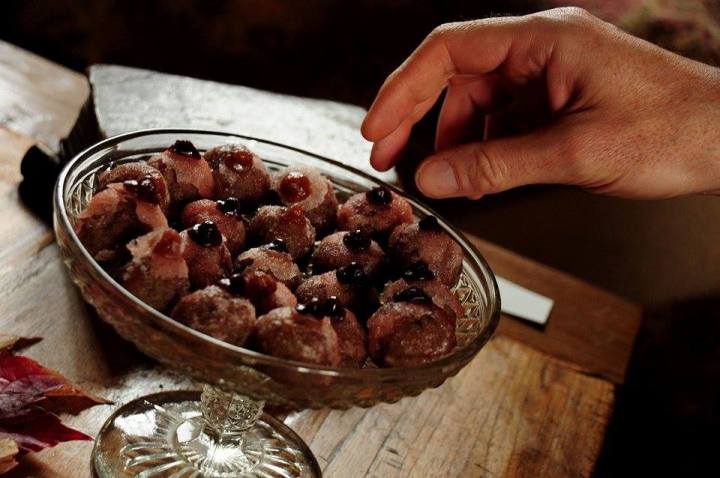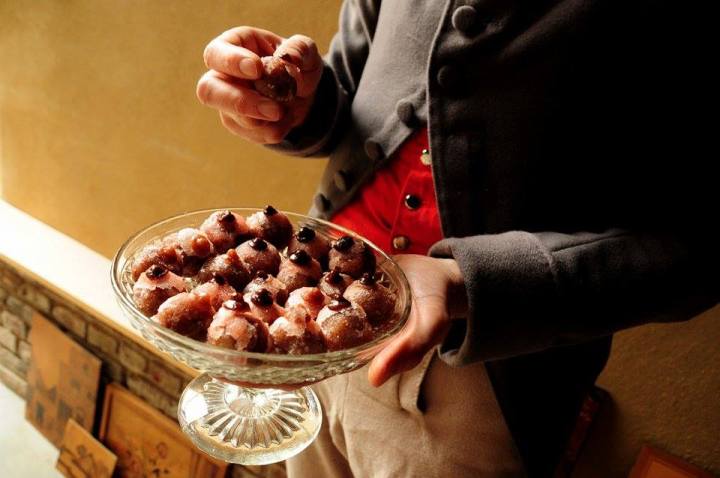
Who does not remember Salieri presenting “nipples of Venus” to Mozart’s wife Constanze? in the tongue-in-cheek scene from Miloš Forman’s 1984 movie “Amadeus”. Capezzoli di Venere are a traditional sweetmeat from northern Italy. Today they are commercially available as chocolates with an almond or walnut filling. But even if they have the right shape, is this what Salieri might have offered Stanzi? — No.

— Let me offer you some refreshment. Do you know what these are? Capezzoli di Venere – nipples of Venus!
— Oh!
— They’re Roman chestnuts in brandied sugar. Try one. Go on, try one! They’re quite surprising.
— Hmm… They’re wonderful! Thank you very much, Your Excellency.
After some research, my fiancé (who is both a historian and a cooking enthusiast) decided upon the following recipe: Mix boiled chestnuts with marzipan and a little brandy to make dough; roll into balls. For the icing, mix sugar with a little water and a drop of alchermes (see below). Prepare tiny brown balls of marzipan mixed with cocoa powder(*). Coat the larger balls with pink icing and top with a darker “nipple”. Let dry for a whole day in a cool place.
Note:
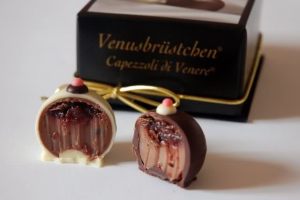
(*) In 1815 Van Houten invented the “Dutch process”, which gives cocoa a milder taste and forms the basis for much of modern chocolate. Before that time, roasted cocoa beans were simply ground into cocoa mass – resulting in a more bitter, tangy taste. Chocolate as we know it today was not used to make sweetmeats in the 18th century.
After a trip to Florence where we were able to obtain the most elusive ingredient – alchermes – it was time to put the recipe to the test. Here are the results.
To make 18th century “nipples of Venus”:
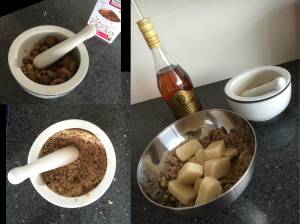
We started by crushing boiled chestnuts. This is made into a dough-like mass by mixing in marzipan. A small amount of brandy adds flavour as well as a little moisture. We rolled balls with a diameter of ca. 2.5 cm.
Sugar in Mozart’s time would have come from the Caribbean. Extracted from sugarcane juice, it reached customers in the form of conical sugarloaves that could weigh up to 15 kilos. In the 18th century, the world’s largest source of sugar was the Caribbean. Plantations in the French and British colonies produced sugar cane in large quantities, changing both world economy and European taste: Britain consumed five times as much sugar in 1770 as in 1710. We used ordinary white sugar, which today is made in a very similar way (albeit on an even larger industrial scale).

For the icing, sugar is heated au bain marie. A few drops of alchermes provide colour as well as an exquisite aromatic taste. Alchermes is an Italian liqueur with a strong red colour, flavoured with various herbs and spices. Its name is derived from “Kermes vermillio”, a small scale insect used to make crimson dye in the Mediterranean since antiquity. This Florentine herbal liquor, prepared at the Santa Maria Novella convent, was so much loved by the De’ Medici family that it became known in France as “liquore dei Medici”. It is still produced here and available at Officina Profumo – Farmaceutica di Santa Maria Novella.
The icing was used to dress the balls is a pink coat, which then only lacked one final element.
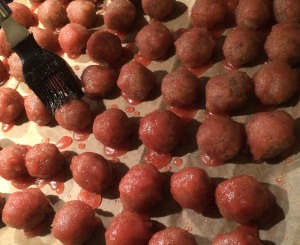
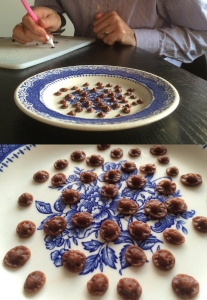
We mixed a small amount of marzipan with cocoa powder and rolled tiny balls, which were further modelled with a sculpting tool. One was put on top of each large ball.
Finished result:
